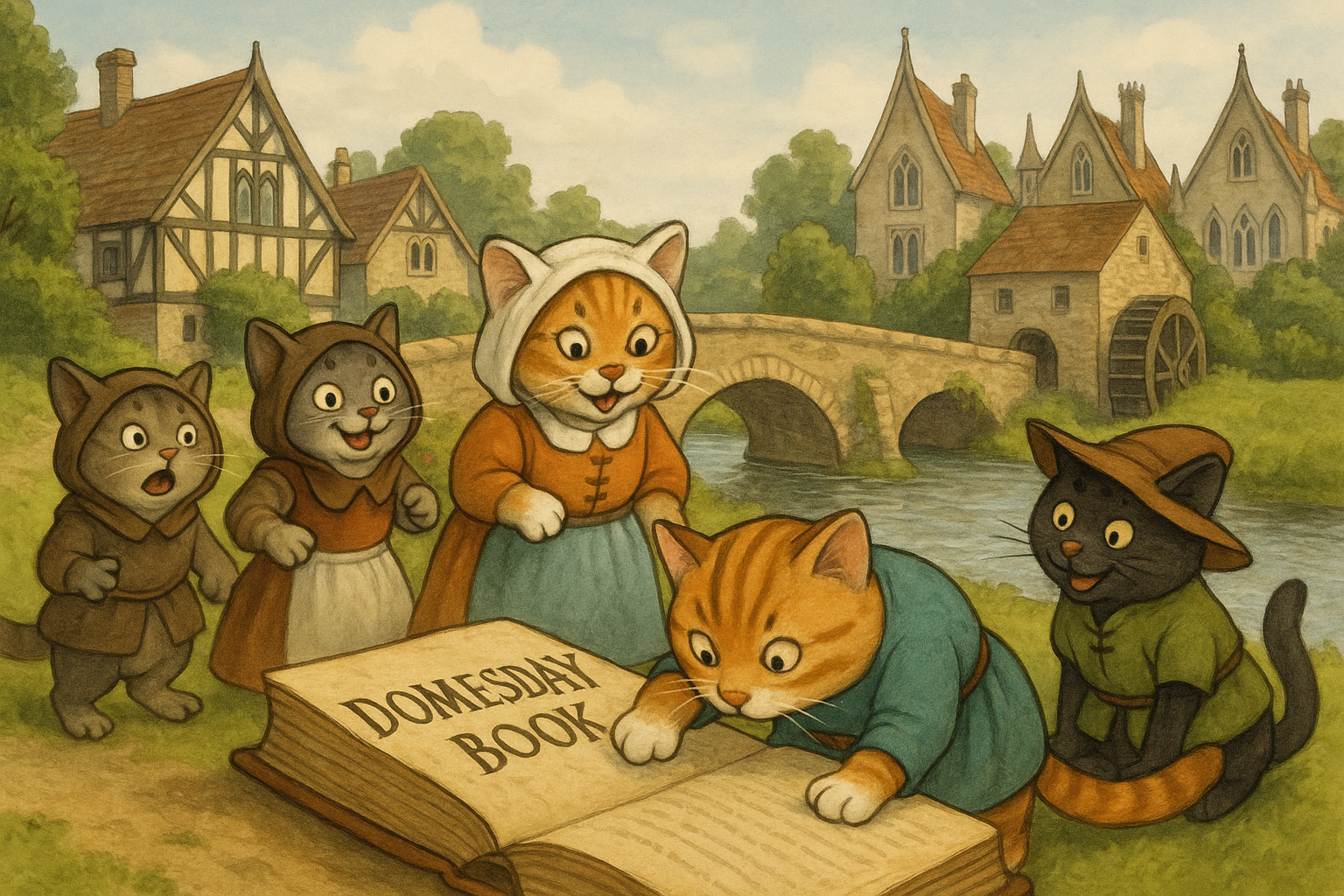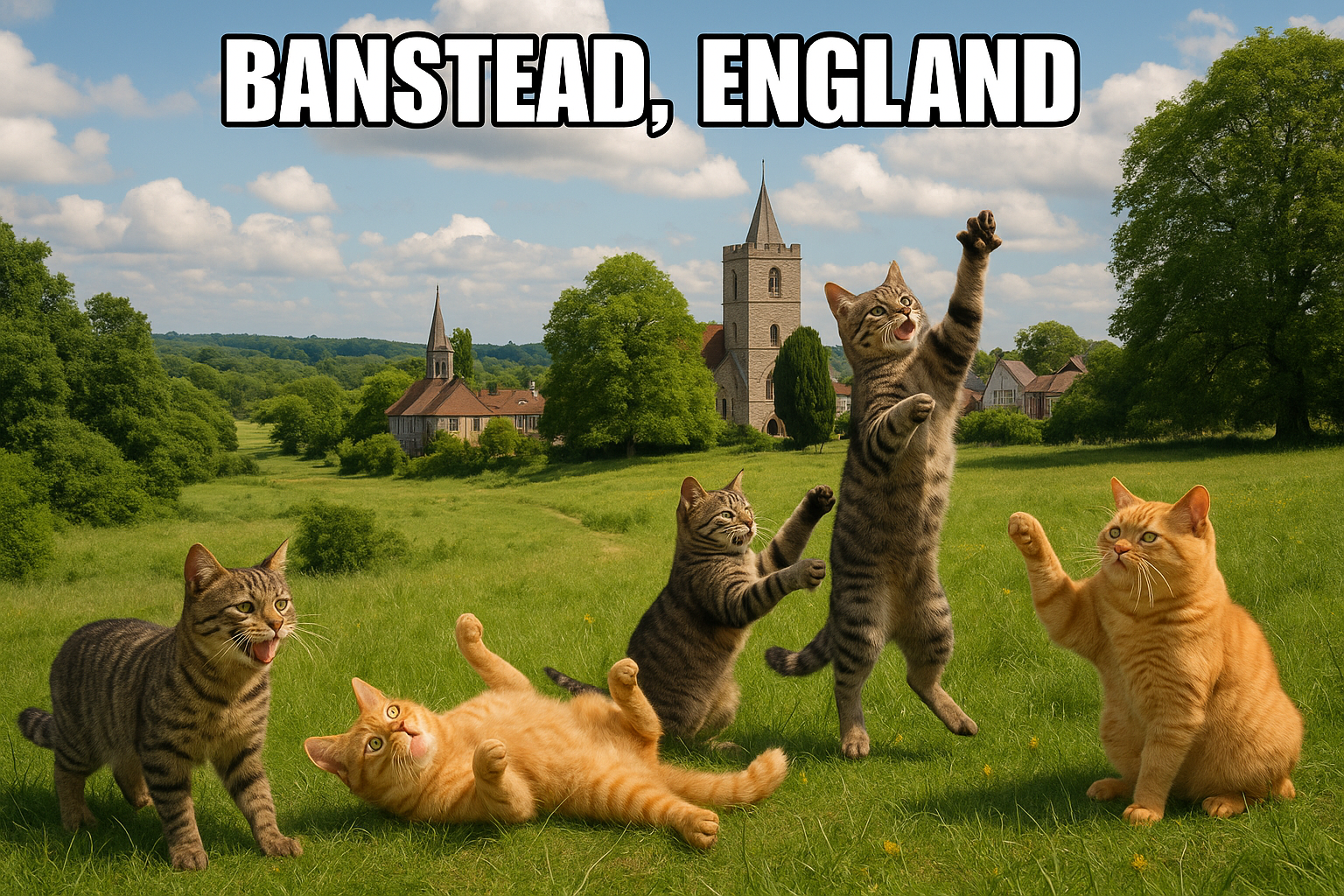The Historical Evolution of Wallington: From Anglo-Saxon Roots to Modern Development

The name “Wallington” derives from the <a href="https://en.wikipedia.org/wiki/Old<em>English">Anglo Saxon</a> “Waletone”, meaning “village of the Britons”. Wallington appears in <a href="https://en.wikipedia.org/wiki/Domesday</em>Book">Domesday Book</a> of 1086 and was held by <a href="https://en.wikipedia.org/wiki/William<em>the</em>Conqueror">William the Conqueror</a>. Its domesday assets were: 11 <a href="https://en.wikipedia.org/wiki/Hide<em>(unit)">hides</a>. It had 2 <a href="https://en.wikipedia.org/wiki/Mill</em>(grinding)">mills</a> worth £1 10s 0d, 11 <a href="https://en.wikipedia.org/wiki/Plough">ploughs</a>, 8 acres (32,000 m2) of <a href="https://en.wikipedia.org/wiki/Meadow">meadow</a>. It rendered £10.<a href="https://en.wikipedia.org/wiki/Wallington,<em>London#cite</em>note-3">[3]</a> The historic village was situated somewhat to the north of the current town centre around what is now Wallington Bridge over the <a href="https://en.wikipedia.org/wiki/River<em>Wandle">River Wandle</a>. At the time of the Domesday book there were two mill ponds. The mill buildings have long been demolished, but the mill pond survives as The Grange boating lake. In the 1860s one Alfred Smee, surgeon to the Bank of England, constructed an elaborate garden on the north side of the Mill Pond, and wrote an illustrated book called “My Garden” in 1872.<a href="https://en.wikipedia.org/wiki/Wallington,</em>London#cite<em>note-4">[4]</a> What was then called “Carshalton” railway station was opened in 1847 in the open fields to the south of Wallington because the owner of <a href="https://en.wikipedia.org/wiki/Carshalton</em>Park">Carshalton Park</a> objected to it being built near to Carshalton village. This acted as a spur to the development of the area and in the 1860s Nathaniel Bridges created a prestigious housing estate of <a href="https://en.wikipedia.org/wiki/Gothic<em>revival">gothic revival</a> villas (architect E. L. Brock). To provide a church for the estate, Bridges sponsored the construction of Holy Trinity, and Wallington became a separate parish in 1867. The area around Holy Trinity Church is known as Wallington Old Town. In particular Clifton Road, Belmont Road and Park Road exhibit some imposing Victorian and Edwardian villas. This southward development continued towards Woodcote and by the time of the <a href="https://en.wikipedia.org/wiki/First</em>World_War">First World War</a> the section of Woodcote Road to the south of the station had become the new High Street.

Old English (Englisc or Ænglisc, pronounced [ˈeŋɡliʃ] or [ˈæŋɡliʃ]), or Anglo-Saxon, is the earliest recorded form of the English language, spoken in England and southern and eastern Scotland in the Early Middle Ages. It developed from the languages brought to Great Britain by Anglo-Saxon settlers in the mid-5th century, and the first Old English literature dates from the mid-7th century. After the Norman Conquest of 1066, English was replaced for several centuries by Anglo-Norman (a type of French) as the language of the upper classes. This is regarded as marking the end of the Old English era, since during the subsequent period the English language was heavily influenced by Anglo-Norman, developing into what is now known as Middle English in England and Early Scots in Scotland. Old English developed from a set of Anglo-Frisian or Ingvaeonic dialects originally spoken by Germanic tribes traditionally known as the Angles, Saxons and Jutes. As the Germanic settlers became dominant in England, their language replaced the languages of Roman Britain: Common Brittonic, a Celtic language; and Latin, brought to Britain by the Roman conquest. Old English had four main dialects, associated with particular Anglo-Saxon kingdoms: Kentish, Mercian, Northumbrian, and West Saxon. It was West Saxon that formed the basis for the literary standard of the later Old English period, although the dominant forms of Middle and Modern English would develop mainly from Mercian, and Scots from Northumbrian. The speech of eastern and northern parts of England was subject to strong Old Norse influence due to Scandinavian rule and settlement beginning in the 9th century. Old English is one of the West Germanic languages, with its closest relatives being Old Frisian and Old Saxon. Like other old Germanic languages, it is very different from Modern English and Modern Scots, and largely incomprehensible for Modern English or Modern Scots speakers without study. Within Old English grammar, the nouns, adjectives, pronouns, and verbs have many inflectional endings and forms, and word order is much freer. The oldest Old English inscriptions were written using a runic system, but from about the 8th century this was replaced by a version of the Latin alphabet.

Domesday Book ( DOOMZ-day; the Middle English spelling of "Doomsday Book") is a manuscript record of the Great Survey of much of England and parts of Wales completed in 1086 at the behest of William the Conqueror. The manuscript was originally known by the Latin name Liber de Wintonia, meaning "Book of Winchester", where it was originally kept in the royal treasury. The Anglo-Saxon Chronicle states that in 1085 the king sent his agents to survey every shire in England, to list his holdings and dues owed to him. Written in Medieval Latin, it was highly abbreviated and included some vernacular native terms without Latin equivalents. The survey's main purpose was to record the annual value of every piece of landed property to its lord, and the resources in land, labour force, and livestock from which the value derived. The name "Domesday Book" came into use in the 12th century. Richard FitzNeal wrote in the Dialogus de Scaccario (c. 1179) that the book was so called because its decisions were unalterable, like those of the Last Judgment, and its sentence could not be quashed. The manuscript is now held at the National Archives in Kew, London. Domesday was first printed in full in 1783, and in 2011 the Open Domesday website made the manuscript available on the Internet. The book is an invaluable primary source for modern historians, especially economic historians. No survey approaching the scope and extent of Domesday Book was attempted again in Britain until the 1873 Return of Owners of Land (sometimes termed the "Modern Domesday") which presented the first complete, post-Domesday picture of the distribution of landed property in the United Kingdom.

William the Conqueror (c. 1028 – 9 September 1087), sometimes called William the Bastard, was the first Norman king of England (as William I), reigning from 1066 until his death. A descendant of Rollo, he was Duke of Normandy (as William II) from 1035 onward. By 1060, following a long struggle, his hold on Normandy was secure. In 1066, following the death of Edward the Confessor, William invaded England, leading a Franco-Norman army to victory over the Anglo-Saxon forces of Harold Godwinson at the Battle of Hastings, and suppressed subsequent English revolts in what has become known as the Norman Conquest. The rest of his life was marked by struggles to consolidate his hold over England and his continental lands, and by difficulties with his eldest son, Robert Curthose. William was the son of the unmarried Duke Robert I of Normandy and his mistress Herleva. His illegitimate status and youth caused some difficulties for him after he succeeded his father, as did the anarchy which plagued the first years of his rule. During his childhood and adolescence, members of the Norman aristocracy battled each other, both for control of the child duke, and for their own ends. In 1047, William quashed a rebellion and began to establish his authority over the duchy, a process that was not complete until about 1060. His marriage in the 1050s to Matilda of Flanders provided him with a powerful ally in the neighbouring county of Flanders. By the time of his marriage, William was able to arrange the appointment of his supporters as bishops and abbots in the Norman church. His consolidation of power allowed him to expand his horizons, and he secured control of the neighbouring county of Maine by 1062. In the 1050s and early 1060s, William became a contender for the throne of England held by the childless Edward the Confessor, his first cousin once removed. There were other potential claimants, including the powerful English earl Harold Godwinson, whom Edward named as king on his deathbed in January 1066. Arguing that Edward had previously promised the throne to him and that Harold had sworn to support his claim, William built a large fleet and invaded England in September 1066. He decisively defeated and killed Harold at the Battle of Hastings on 14 October 1066. After further military efforts, William was crowned king on Christmas Day, 1066, in London. He made arrangements for the governance of England in early 1067 before returning to Normandy. Several unsuccessful rebellions followed, but William's hold on England was mostly secure by 1075, allowing him to spend the greater part of his reign in continental Europe. William's final years were marked by difficulties in his continental domains, troubles with his son, Robert, and threatened invasions of England by the Danes. In 1086, he ordered the compilation of the Domesday Book, a survey listing all of the land-holdings in England along with their pre-Conquest and current holders. He died in September 1087 while leading a campaign in northern France, and was buried in Caen. His reign in England was marked by the construction of castles, settling a new Norman nobility on the land, and change in the composition of the English clergy. He did not try to integrate his domains into one empire but continued to administer each part separately. His lands were divided after his death: Normandy went to Robert, and England went to his second surviving son, William Rufus.
The hide was an English unit of land measurement originally intended to represent the amount of land sufficient to support a household. The Anglo-Saxon hide commonly appeared as 120 acres (49 hectares) of arable land, but it probably represented a much smaller holding before 1066. It was a measure of value and tax assessment, including obligations for food-rent (feorm), maintenance and repair of bridges and fortifications, manpower for the army (fyrd), and (eventually) the geld land tax. The hide's method of calculation is now obscure: different properties with the same hidage could vary greatly in extent even in the same county. Following the Norman Conquest of England, the hidage assessments were recorded in the Domesday Book of 1086, and there was a tendency for land producing £1 of income per year to be assessed at 1 hide. The Norman kings continued to use the unit for their tax assessments until the end of the 12th century. The hide was divided into four yardlands or virgates. It was hence nominally equivalent in area to a carucate, a unit used in the Danelaw.
Hide (unit)

A mill is a device, often a structure, machine or kitchen appliance, that breaks solid materials into smaller pieces by grinding, crushing, or cutting. Such comminution is an important unit operation in many processes. There are many different types of mills and many types of materials processed in them. Historically, mills were powered by hand or by animals (e.g., via a hand crank), working animal (e.g., horse mill), wind (windmill) or water (watermill). In the modern era, they are usually powered by electricity. The grinding of solid materials occurs through mechanical forces that break up the structure by overcoming the interior bonding forces. After the grinding the state of the solid is changed: the grain size, the grain size disposition and the grain shape. Milling also refers to the process of breaking down, separating, sizing, or classifying aggregate material (e.g. mining ore). For instance rock crushing or grinding to produce uniform aggregate size for construction purposes, or separation of rock, soil or aggregate material for the purposes of structural fill or land reclamation activities. Aggregate milling processes are also used to remove or separate contamination or moisture from aggregate or soil and to produce "dry fills" prior to transport or structural filling. Grinding may serve the following purposes in engineering: increase of the surface area of a solid manufacturing of a solid with a desired grain size pulping of resources
Unsupported Slack block type: rich_text


